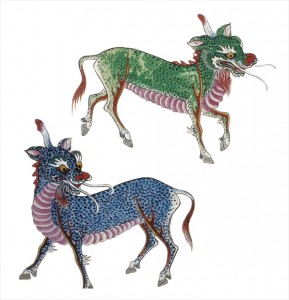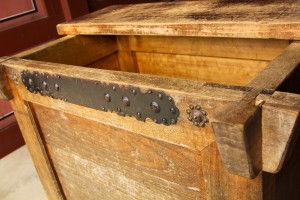Court life sounds horrible
In case anyone was wondering whether royal life in the Korean court in the 1700s would be fun or not:
Prince Sado’s illness grew worse. Before he had completely recuperated from his recent bout of smallpox(0), the Two Highnesses passed away. He was saddened by these losses. He was also heavily burdened by the ritual duties of mourning(0.5). . . . During the five-month wake, after a wail(1) at Kyonghun Pavilion His Majesty(2) would invariably drop by at Okhwa Hall to scold his son for whatever he happened to find irritating. Then, when the Prince went to T’ongmyong Pavilion, the same scene would be repeated. How angry this made the Prince! His rage was kindled like a well-constructed fire. It was His Majesty’s habit to rebuke his son in front of a large crowd. It was at T’ongmyong Pavilion, before all the ladies-in-waiting, where the Prince went to honor his grandfather’s memory despite the relentless summer heat of the sixth and seventh months, that His Majesty’s sharpest and most humiliating derision awaited him(2.5).
No longer able to contain his rage, his mind helplessly seized by disease, Prince Sado(3) began to beat his eunuchs severely. Beating servants in the mourning period was, of course, grievously wrong(4) . . . . From that year [1757] his “phobia of clothing” asserted itself(5). I cannot begin to speak of the hardships and heartaches this terrible symptom wrought.
(From The Memoirs of Lady Hyegyeong. I recommend skipping right to the 1805 Memoir for the juicy stuff.)
Footnotes:
0.
Smallpox! Fun times.
0.5.
During the mourning period, they would pack blocks of ice around the royal corpse and put seaweed around it to absorb the melting water. I bet that smelled great in the summer heat!
1.
Near as I can tell, royal Korean mourning customs of the time included 5 formal wailing rituals per day. For five months.
2.
King Yeongjo, who ruled for decades and sounded kind of OK, except for being emotionally cold to Sado and one of his sisters, having a lot of very strong phobias, and making Prince Sado attend all the boring interrogations and executions of political criminals while never inviting him to parties. Oh yeah, and that whole thing with the rice chest.
2.5.
Though that moment of sharp derision was nothing to what was going to happen later. Did I mention the rice chest?
3.
Prince Sado had a tragic end as his father ordered him to get into a rice chest (which was something like a giant fancy wardrobe, or a big TV cabinet, except potentially full of rice) and then had him locked in, in front of his family. He died of asphyxiation, or lack or water, or starvation, or something, after 8 days. At least, he kept screaming for a few days and then after 8 days they took a peek in and he was definitely dead.
4.
Apparently, when it’s not the five month mourning period, you can beat your servants all you like. This hardly seems the way to get your servants not to kill you.
5. Each time he changed clothes, Prince Sado would have twenty or thirty sets of clothing laid out. He would burn some of them. If anyone messed up while dressing him, he could not accept those clothes and would beat or kill the servant. For over six years they had to keep finding cloth to make him new outfits. Once he was dressed he’d wear that set of clothes until it was filthy.
So.
Then the Prince chopped off a lot of people’s heads at random, raped a bunch of ladies in waiting, jumped in a well to try and kill himself (failing). For months or maybe years. (Except, obviously, not jumping into a well for years. That was just once.) Everyone covered up for him as best they could, since talking about it would probably get them killed or exiled. When his father the King finally confronted him about this, Prince Sado claimed he did it all because his dad didn’t love him enough.
That was only a tiny glimpse into the messed up drama of palace life. It’s all backstabbing your second cousin over a vaguely worded memo or an imprudently ambiguous sounding comment to the King, gossip, exile, scandal; or, if you’re small, being taken away from your parents, pressured to study the classics, put away your toys, and demonstrate extreme filial piety when you’re barely potty trained. NOT FUN.
Reading about Hyegyeong as well as reading what she wrote makes me think of the nature of history and what we think we know. Her reality is slippery even in her representations of recorded history in the daily life of the palace. She claims for instance to have bribed the palace scribes (daily) to change the record of what the King said that day. People are convicted of treason based on interpretations of memos, then years later pardoned, with plausible explanations of the falsity of the earlier records. She is an awesome unreliable narrator and creator of history. So many official histories look that way; maybe all of them.
“Thus my family gathered all my letters and, at regular intervals, washed away all that was written.”

